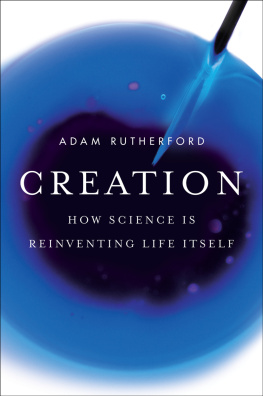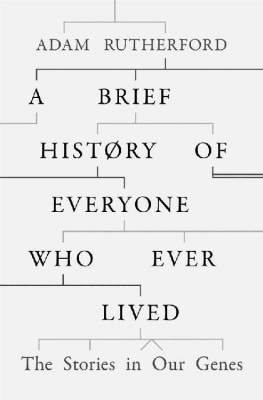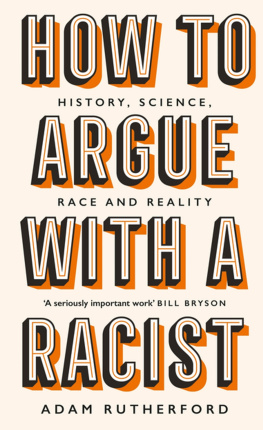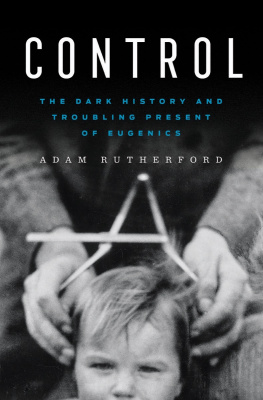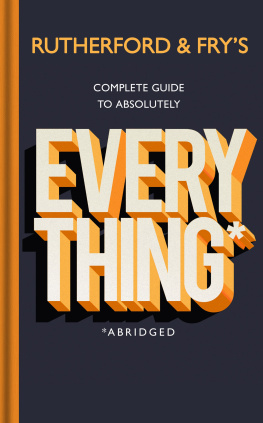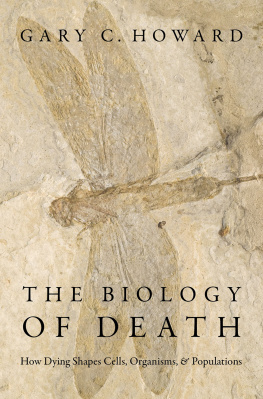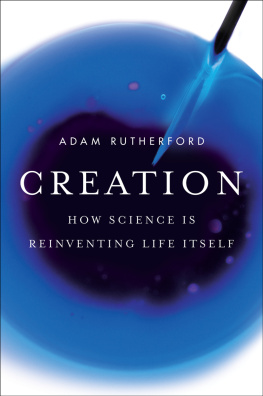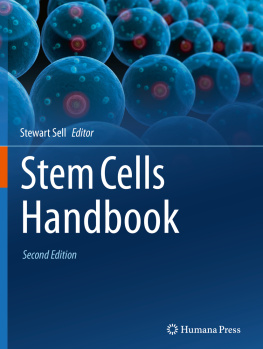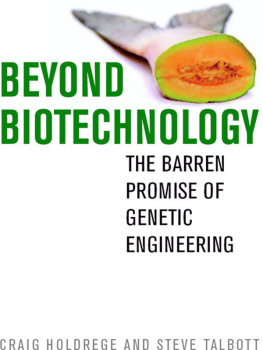USA | Canada | UK | Ireland | Australia | New Zealand | India | South Africa | China
All rights reserved. No part of this book may be reproduced, scanned, or distributed in any printed or electronic form without permission. Please do not participate in or encourage piracy of copyrighted materials in violation of the authors rights. Purchase only authorized editions.
Rutherford, Adam, Ph. D.
Creation : how science is reinventing life itself / Adam Rutherford.
p. ; cm.
Includes bibliographical references and index.
I. Title.
[DNLM: 1. BiogenesisPopular Works. QH 325]
Image on title page and part titles LAGUNA DESIGN / Science Photo Library / Getty Images
Introduction
I magine you were unlucky enough to get a paper cut opening this book. Its an annoying but trivial injury, painful but easily mended. Yet the response that this incision triggers is complex, organized, and profound. Its comparable to the human reaction to a large-scale catastrophe such as a flood or an earthquake. As in those disasters, the first phase is an emergency response.
Everything that occurs in and around your cut happens as a beautiful orchestration of individual living cells. At the precise moment the sharp edge of the paper slices through the outermost surface of your skin, cells embedded throughout your flesh, called nociceptors, spark into action. Via long, stringy nerve fibers that sprout from their surfaces, an electrical signal zaps from your fingertip to cells in the cortex of your brain in a fraction of a second. You perceive pain there, and at the speed of thought your brain fires a message back to groups of muscle cells in your arm, telling them to twitch in a coordinated fashion. The muscle contracts. Your arm recoils. All of this happens within a heartbeat.
The cut will have riven cells from one another in the walls of a blood vessel, a key event in kick-starting the healing process. Opening a capillary causes blood to flood the wound. The scarlet of blood is hemoglobin, the protein molecule that ferries oxygen around your body, and its packed into the concave disks of red blood cells shaped like a round mint half-sucked on both sides. Red cells account for just under half of the eleven pounds of blood that the average person carries. Most of the rest is made up of plasma, which is mostly water. But in that plasma, comprising less than 1 percent of blood, are cells that are utterly critical in repairing your wound. These are white blood cells, and their job is to find, fight, and thwart any opportunistic invaders such as bacteria, which immediately start trying to sneak into the body in order to flourish, but in so doing cause you infection.
Meanwhile, the tip of the nerve cell that triggered that pain sends out a signal in the blood that attracts platelet cells. These are the bodys rapid response units, which clump together to form a clot to prevent further blood loss. They also act as emergency beacons, sending out signals to summon dozens of other workerscells and proteins that protect the wound and initiate the process of rebuilding. Muscular cells in the artery walls spasm in synchronized contraction. Your finger throbs. This twitching restricts blood flow and loss, and helps keep immune cells where the action is. The formation of a clot prevents blood loss and hemorrhage, and marks the first phase of wound healing. Now that the barrier between the inside of your body and the rest of the world is reestablished, the cleanup and restoration can proceed.
After an hour, neutrophils comprise the majority of the cells attending the paper cut. These cells carry detectors on their membranes that pick up the chemical emergency signals pulsing out from ground zero, and move in the direction of the strongest of them. On arrival, neutrophils act as specialist cleaners, enveloping bacteria and vacuuming up debris and detritus, finally killing themselves when their task is complete.
Over the next twenty-four hours, another regiment of cells files into the site; each cell matures into the giant Pac-Man of the immune system, the macrophage (which translates into big eater in Greek). They chomp up the neutrophil carcasses and any other potentially damaging remains they find.
Crucially, the cut itself isnt simply stuck back together; otherwise we would lose the sensitivity that was there before the injury. Nor is it simply a case of plugging the gap with new skin cells; otherwise we would be lumpy and malformed. Our bodies strive to make repairs as invisible as possible, and to restore the body to its preinjury state. The cut needs to be patched up with new flesh, which is a complex collaboration of cells. And that means the birth of tissue.
As with any reconstruction, the foundations must be laid first. Building-block cells called fibroblasts flood the site of the cut over the next couple of days, reproducing themselves and migrating across the surface of the wound from all directions, extending ruffle-like feelers called pseudopodiafake feetas they shuffle along. The march stops when they meet in the middle, forming a layer of foundation for the full reconstruction, and they begin to turn themselves into parts of new blood vessels and new skin tissue. Locked down in position, they produce and ooze collagen to lay down a sort of matrix or scaffold for the rest of the reconstruction project.
Skin, of course, is made of cells, but not just one type. Our skin cells grow, layer by layer, from within, with dead cells sloughing off on the outside in a process of continual renewal. Embedded within this matrix are also a host of other cells, including hair follicles, sweat and oil glands, and the blood vessels that feed the flesh with oxygen and nutrients. All of these types of cells have to be rebuilt into the repair tissue.
A month after you opened this book, the cut is effectively healed. But long after you have forgotten all about it, the cells of your body will continue work on the wound for months, maybe a year, remodeling the site to restore it as well as they can and minimizing any scar. The redness fades as the temporary blood vessels that extended to fuel the repair process retreat, and the temporary collagen matrix that acted as a scaffold for the rebuilding is replaced with a more permanent version. A new piece of living tissue, a new piece of you, has been formed in an act of minor but necessary repair.
The entirety of this reconstruction project has been brought about by thousands of cells working together and producing thousands of new, highly specialized cells that make up tissue: epidermis, glands, veins, and arteries. The fact that we, and all life, can create new living tissue out of cells is the grand idea that unites not only all living things, but every living thing that has ever existed.

